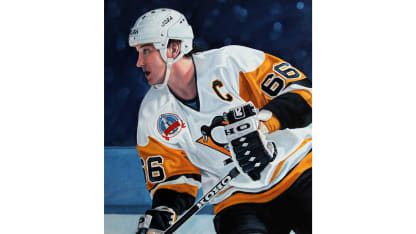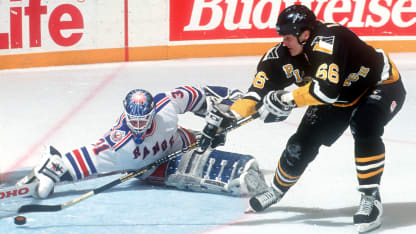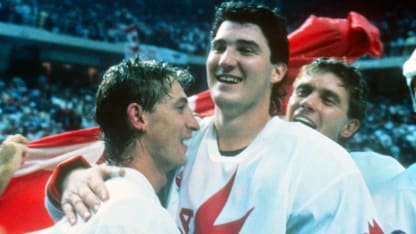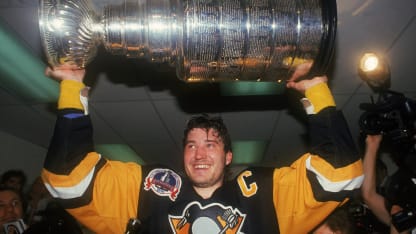Meanwhile, playing for Team Canada in the 1987 Canada Cup proved transformative. He practiced and played with Stanley Cup champions -- including linemate Wayne Gretzky -- and learned how to excel at hockey's highest level. Not yet 22, Lemieux had 11 goals -- including the tournament-winner late in the final game -- to lead all players and his 18 points in nine games were topped only by Gretzky's 21. When he rejoined the Penguins, his confidence took off.
Some nights, it appeared Lemieux could score at will, when every shot and pass ended up in the net. His 85 goals, 114 assists and 199 points in 1988-89 -- all career highs -- were at that point the most by anyone not named Gretzky. On New Year's Eve that season, he "scored for the cycle" -- he had five goals, each a different variety: at full strength, on the power play, shorthanded, on a penalty shot and into an empty net -- against the New Jersey Devils. To the best of anyone's knowledge, it's the only time this has been done.
That spring, in his first trip to the Stanley Cup Playoffs, Lemieux scored five goals and three assists in Game 5 of the Patrick Division Finals against the Flyers, including a hat trick before the game was seven minutes old. "When I'm going good, everything seems to slow down, and I'm seeing everyone on the ice," he said. "Every time I get the puck, I see the whole ice, who is open, who is not."
He was certainly going good at the start of 1989-90, with a 46-game point streak. But he did it amidst severe back pain, which ended the streak and finally forced him from the lineup. So debilitated was Lemieux that to get on the ice, he had to grab his pants with his hand so he could lift his leg to get over the boards and on to the ice. "To keep the point streak going through all that pain told me an awful lot about Mario Lemieux," Craig Patrick, the Penguins GM at the time, said on the TV series "Greatest Hockey Legends."
He missed 21 games and returned for the season finale, a game Pittsburgh needed for the playoffs, but his goal and assist weren't enough in a 3-2 loss to the Buffalo Sabres.
Back surgery that summer proved dangerously problematic; an infection set in and doctors were concerned Lemieux might not walk again, much less play. He stayed off his feet for three months, finally returning in January 1991, poised for his first stunning comeback.
With 45 points in 26 games down the stretch, he helped lead the Penguins back to the playoffs, where he led all postseason scorers with 44 points in 23 games. In the Cup Final, Lemieux's goal to open the scoring in Game 2 -- perhaps the signature goal of his career -- lifted Pittsburgh fans out of their seats. He split the defense and, at the top of the crease, faked to his right, cut sharply to his left to get around Minnesota North Stars goalie Jon Casey and, while falling, shoveled a backhander over the goal line.





